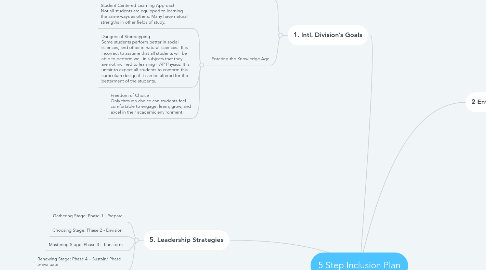
1. 4 Newly Proposed Curriculum
1.1. Grade 1-2 Choose Social Science OR Science
1.1.1. AP Physics
1.1.2. AP World History
1.2. Grade 3
1.2.1. AP U.S. History
1.2.2. AP Chemistry
1.2.3. AP Natural Science
2. 1. Intl. Division’s Goals
2.1. Success in both SAT and TOEFL Exams Success in AP Courses Increased cultural awareness and understanding Unified Multi-Cultural Teaching Practices Enrollment in a U.S./Foreign University Creating Global Citizens
2.2. Entering the Knowledge Age
2.2.1. Student Centered Learning Approach Not all students are equipped to learning the same ways as others. Many have natural strengths in other fields of study.
2.2.2. Dangers of Stereotyping Some students perform better in social sciences, and other in natural sciences. It is incorrect to assume that all students will be able to perform well in subjects that they are not inclined to learning= AP Physics. It is unfair to expect all students to conform this curriculum design if it can be altered for the betterment of the students.
2.2.3. Freedom of Choice Only through choice can students feel comfortable to engage, learn, grow, and excel in their academic environment.

